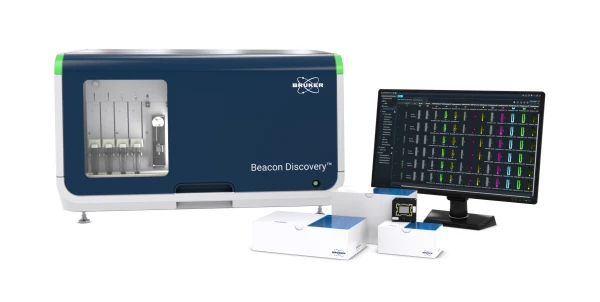Progress in Cannabinoid Purification and Testing
Central to the adoption of standardized methods for cannabis processing and testing is the advent of superior methods for both. Great strides have been made with technologies to suit cannabis grinding and milling, compound extraction, and cannabinoid purification and testing. Standardization will come in step with universal state and federal guidelines – and advances in new technologies may help lead the way in driving this progress.
Interesting new cannabinoid purification technologies include the latest from Gilson. As part of their Natural Product Purification business they have released CPC+PLC application for Cannabis Sativa analysis. CPC is a liquid/liquid extraction method that avoids silica based supports and the associated costs of consumables. PLC is essentially two techniques in one platform – with the ability to separate compounds by HPLC and FLASH in one instrument. Gilson has shown the application of these technologies together in the purification of Cannabidiol (CBD) from crude cannabis extracts.
Centrifugal Partition Chromatography (CPC), also known as Counter Current Chromatography (CCC), is a liquid/liquid extraction method that bypasses traditional silica column-based extractions, producing high quality isolation through a short and robust process. The technique is special as both mobile and stationary phases are liquid, and the stationary phase is immobilized by a strong centrifugal force.
CPC typically involves a series of connected extraction cells with hollow bodies and inlets and outlets of liquid connections. The stationary phase liquid is pumped in prior to rotation. The mobile phase is then pumped in and enters as small droplets, behaving in accordance with Stoke’s law. After passage through the stationary phase, similar migrating particles unite forming an eluate. The parameters for separation can be tuned by changing the solvent system, thus avoiding the need for different solid supports and associated reagents.
CCC is theoretically similar however the instrumentation required is different. Both have advantages and disadvantages, although CPC has been used successfully for several decades for the isolation of natural compounds. The ability to achieve very high selectivity, and the ability to tolerate samples containing large amounts of particulate matter, have made it extremely useful for direct analysis of biomass – such as cannabis material in the present application.
The PLC purification technology from Gilson combines two powerful analytical separation techniques – HPLC and FLASH. Although most are aware of the theory and applications of preparative HPLC, FLASH is a slight derivation where faster flow rates are achieved by pushing the analyte solution through using compressed gas such as air, nitrogen, or argon. Different PLC models have max flow rates ranging from 50 mL/min to 500 mL/min, depending on pressure restrictions. Flow rate performance and options for standard binary gradients or quaternary injections, make the platform functional and versatile for a variety of applications.
CBD needs no introduction as we have written about it’s medicinal relevance, as have many others in the field. A challenge in CBD purification is the hydrophobic nature of the compound and the presence of other, often more abundant, compounds such as THC in crude cannabis extracts.
Gilson reports on the analysis of 5 g of crude extract and the recovery of 205 mg of purified CBD, with a final purity over 95% as shown by independent analytical HPLC. Speaking to the pace and efficiency of this analysis, each 5 g sample consumed 1 L of solvent for every 10 min of separation.
Through the use of this method, THC is effectively separated from the CBD preparation, thus providing a product that is pure and free from the undesirable effects of THC (from a medical perspective). Furthermore, the method can theoretically be adapted from milligram to multi-kilogram scale – providing the means to produce large amounts of pure CBD with high yield and under relatively low solvent conditions.
It will be interesting to see the adoption of these products in small labs and commercial operations alike.










